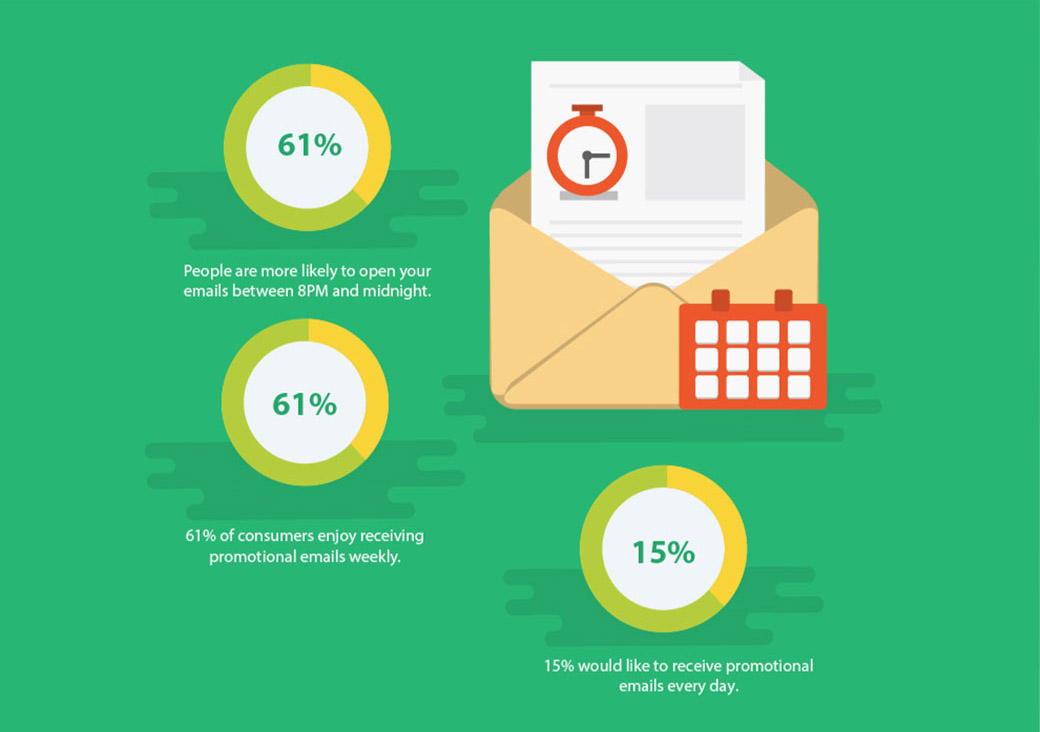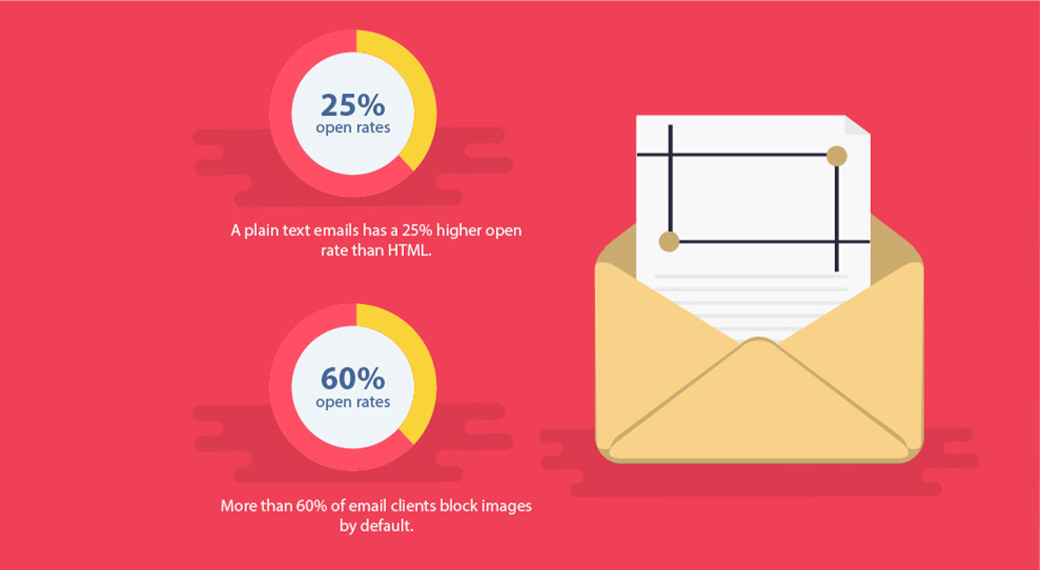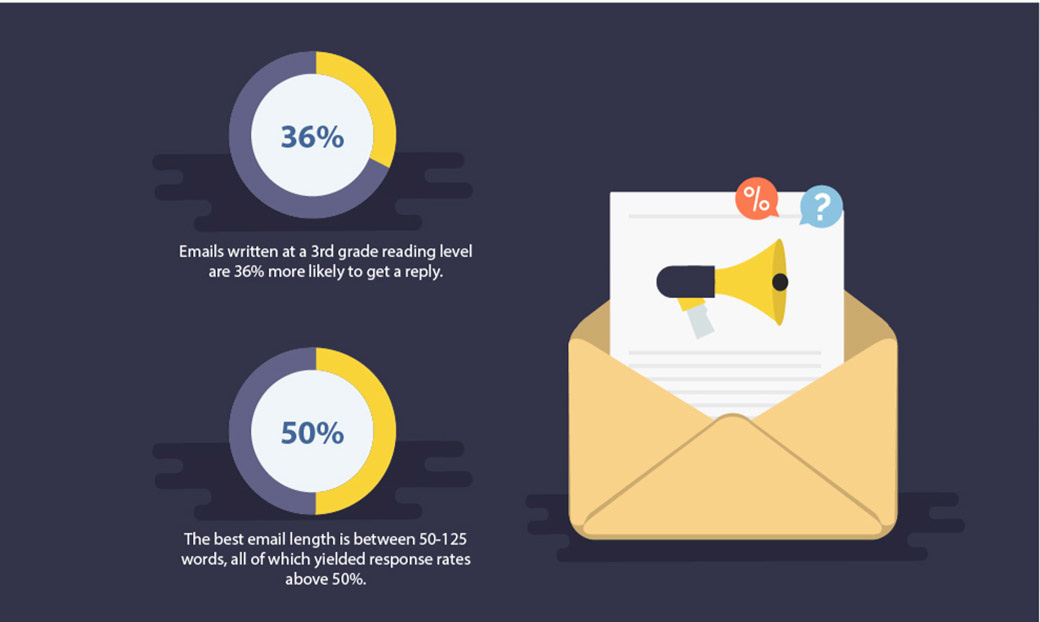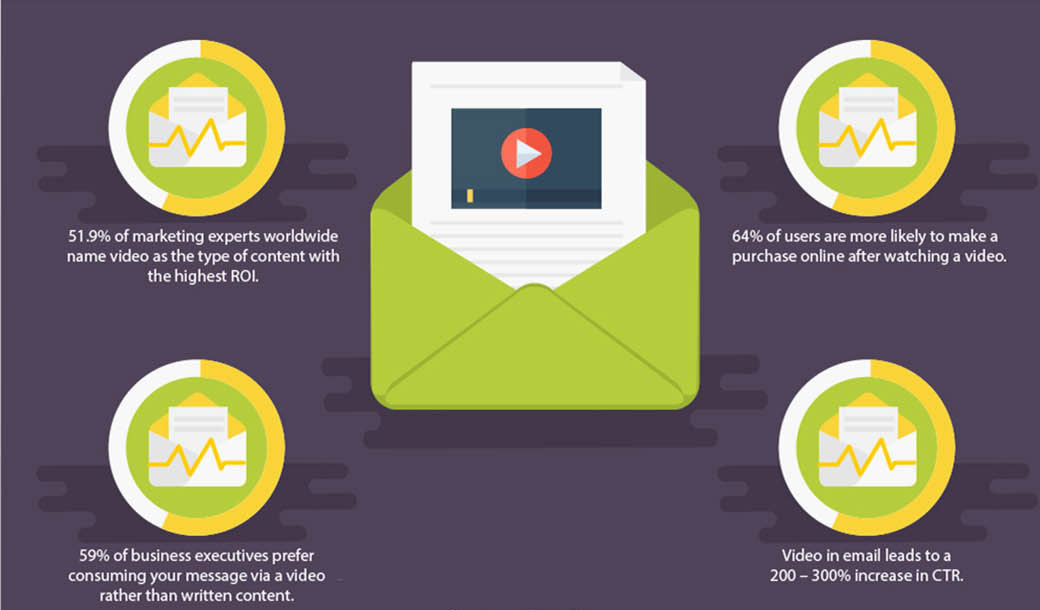Email Marketing Best Practices – Trends to Use in 2019
The last year was a landmark year for marketers. We saw the introduction of the GDPR, a huge leap in tech to help us automate marketing more effectively, and improvements in the AI sector that have made analyzing data a whole lot easier. But with 2018 well out of the way, we need to know what trends to consider going forward. As a result, we have created this post dealing with the email marketing trends that you can expect to see this year and beyond. There is one major reason why we decided to narrow our focus to email marketing best practices and trends. Trying to incorporate other marketing strategies would mean creating an article that would be a bit too long for a blog post.

If you like this article and want to see more of the same, be sure to leave a comment telling us so. We’ll do our best to follow up with other articles of this type if there’s a lot of interest. For now, though, let’s concentrate on the email marketing trends you want to keep an eye on.
Marketing Automation Is Still Big News

Using a CRM system is a no-brainer these days. It enables you to communicate clearly with your staff, keep tabs on customer activity, and also allows you to identify email marketing best practices more easily. These systems are advanced enough to send out a preselected email at a particular trigger point. You simply define what your trigger points will be, and work your way from there. Automation means that the process no longer relies on whether or not your staff has the time to follow up the leads. The software takes things a step further, though. As you are about to see, email marketing automation means that leads are nurtured all along the product cycle. Prospects will receive timeous information pertinent to the stage of the buying cycle they are in.
Marketing automation is becoming more of a rule than an exception since nowadays 47% of B2B marketers use it. It makes sense to automate as much work as possible, because it saves you money, time, and frees staff of repetitive tasks so that they could focus on other, more important duties.
Automation Used Wisely

It will seem like a serendipitous coincidence to the prospect, but the automated mailers have one function – nurturing the relationship. By the time you get to the stage of having a salesperson contact the prospect, she should be primed to buy. The other advantage of email marketing automation is that every touchpoint with the client is recorded. You and your sales staff can see a full record of emails, calls, etc. made to her.
Now, like any other tool, it’s important to use it wisely. If you send the same email to someone two or three times, she’s going to realize that it’s automated and that won’t do you any good. Сreate your automated emails, but update them at least once a quarter to ensure that clients don’t encounter the same marketing statistics over and over again. The last year was the year that automation became truly efficient. In 2019, you can expect it to become even more mainstream. Marketers will be able to collect data with a lot more efficiency, and so the effectiveness of each campaign can be fully monitored. Expect from 2019 to see even more accurate email marketing stats.
Omnichannel Marketing Hits the Big Time

Where things are really going to shift this year is that marketers will start to adopt an omnichannel approach to marketing in a way that we haven’t really seen before. It’s going to be interesting and not that difficult to implement this strategy if you have gotten the automation down. Say, for example, that you send out an email to prospects. If someone clicks on the link in the email, that could be viewed as a trigger point. The system could monitor what her next step is. Did she buy? And if not, what did she do on the site? Did she put the item in the cart and then abandon it? Was she looking for more information?
All of these circumstances could be a good time to send out an SMS or share a piece of content with the client on social media. Email marketing best practices include following up with your prospects at a later stage. Take the contact point up a notch by choosing a different channel to use. The key to getting the omnichannel marketing right in this case is consistency. Make sure that the marketing messages across all channels for a particular campaign are easily recognizable.
Segmentation Based on Metrics

We do have one caveat here, though. You need to ensure that you can analyze your email marketing metrics thoroughly and be able to provide the right data for the prospect at the right time in the buying circle. We’d also suggest doing your homework before you start rushing headlong into automation. It is an extremely useful tool, but like with any other new tool, you need to understand how it works before you just dive right in. Master the basics of the program that you are using before trying out the more interesting advanced features.
It’s a boring process, but you’ll make fewer mistakes. Another thing to consider is how fast you’re moving the customer journey along. It’s important to ensure that your welcome flows are impeccable. You only have one chance to make a good impression, so make it count. It would be better to delay a little and get the right message out than to rush and blow everything.
Email Marketing Best Practices – Hyper-Relevance is Essential

This is a trend that has been building for some time. We know that people want to receive messages that are relevant to their needs. This is going to become vital in 2019. Ensuring that your message is hyper-relevant means that it speaks to the needs of a particular prospect at a specific point in time. The journey starts by segmenting your subscriber list carefully so that each person on the list receives information that they want to receive. It’s email marketing best practices at its simplest – give the client what they want.
Hyper-relevance extends past your prospect base, though. It should also extend to your sales staff as well. The key to making automation really work for you is to provide everyone with the right information at the right time. Sometimes we get so focused on creating the perfect mailer for a client that we forget about the staff. Your sales team needs you to put the same amount of focus into creating processes that will make your salespeople’s lives easier. After all, your staff is usually your main tool in getting you the ever so wanted backlinks and promotion.

That means providing them with the right email marketing stats when they need them. Set up a system that matches the right salesperson with the right customer and then makes sure that your lead management process is honed to a fine-tuned machine. The automation process will be useful here because it will help you to define where a client is in her stage of the journey. Is she about to make the purchase but wavering a little? Then send in your best offer. Has she just started the information-gathering stage? Then it’s better to back off a little and let things progress. Your system will provide her with extra information based on trigger points she activates. It’s a great way to establish which leads are better qualified and which leads your salespeople to need to massage a bit more.
Email Marketing Best Practices – Trust Is a Big Issue
Prospects are more skeptical than ever before. It’s hardly surprising considering the number of spammy offers they get daily. We all know that marketing is not necessarily as accurate as it should be, so we tend not to take things at face value anymore. That makes it harder on those legitimate businesses who are honest about what their offerings are because it means that they have to prove themselves trustworthy. As email marketing best practices go, building trust will be essential going forward. How? You need to be consistent, entirely transparent about your offer and prove to your client that you have her best interests at heart.
To help you along the way here, never make claims that won’t stand up to a basic online search and try to use more personalized campaigns. Let the client see the human side of the company. Let her know that you’re a person too, not just some machine sending off countless emails into the ether. Is that at odds with what we said earlier about email marketing automation? In a way, it might seem to be. After all, if you’re creating a generic email that will be triggered by a particular action, how can you make it personal? The key is to create automated campaigns that seem more personal than generic.
It’s easy enough for the program to insert the client’s name into the email, so start there. Before you start doing that, though, we suggest that you clean up your database. Misspelling someone’s name or accidentally calling her by surname are not good ways to start the relationship off. Once the relationship moves forward, look at ways to get information from clients that you need to personalize your offer further. This means working harder to create a true relationship, especially with GDPR being in full swing now.
Making the Most of Your Email Marketing Metrics
Collect as much information along the way as you can. Take every opportunity to learn everything you can about the client. Every client is different, and more and more they expect companies to acknowledge this fact. The old spray and pray marketing formula is well and truly dead now. It might work once in a while, but it’s more likely to irritate your clients. The best-case scenario is that they think you don’t know them well. The worst-case scenario is that they feel you couldn’t care less.
With all the email marketing stats and other information that you have, creating a more personalized offer shouldn’t be that hard. And if you’re not willing to put in the time, are you sure your competitors won’t be willing either? Where a lot of marketers fall flat is that they only use a fraction of the information they have at disposal. In the past, this was a forgivable lapse considering how difficult it was to process big data.
Forget about that excuse in 2019. AI can help us analyze and process reams and reams of data in seconds. Before, it might have been cost-prohibitive to spend time analyzing client behavior across different channels or devices. Today, however, it’s a lot easier thanks to the smart tech that we have. Going forward, for marketers to make a real impact, they’ll need to prove that they truly know the clients. Fortunately, we have the tools to make data collection and email marketing metrics a lot easier. 2019 is the year to start using these seriously.
Email Marketing Best Practices – Collaboration and Timing

Most of us are working with larger teams or teaming up with other companies. The key to making this collaboration as successful as possible is to ensure that there is great communication between the teams. Everyone must be on the same team when it comes to the goals, expectations, and roles of every individual player. Everyone needs to know what is expected of them, and they need clear instructions to follow.

That will prevent the duplication of efforts. This not only wastes time and money, but it could alienate the client or damage the company image. Let’s say that one salesperson sends out an email to a client, and then another member sends the same message a day later. That client is bound to feel that your company is spamming her. Or she might feel that your company has no idea about what it’s doing.
Use Design Systems and a Modular Approach

A design system is usually a once-off investment. The company creates all the guidelines, resources, documentation, and templates for any type of email that might be necessary. Company logos are built-in, and the layout will be consistent across a range of different emails. Consistency in this area is one of those email marketing best practices that you should take note of. It helps create a consistent image across all communication channels with the clients and makes it much easier to scale up campaigns.

Modular design is aimed at improving overall efficiency. This makes each component of the email and creates a module out of them. It means that when a new email needs to be created, you can just drag and drop the components that you want to use. The advantage of this is that you can quickly and easily create unique emails on the fly.
Aim for Useful Messages Over Pure Marketing

One of the major email marketing trends that are going to be big this year is the focus shifting from pure marketing emails to useful messages. Traditionally, email marketers focus on sending out sales-based messages. This means that even newsletters will contain at least some sort of advertising. That’s not the best approach for today’s consumer. Present-day customers want to know that the company values them and that the relationship is about more than just handing over their money to the business.
If you give them the impression that you’re just trying to sell them something, they’re going to steer clear of your messages. You’ll understand this. We all know that one person who is always out to sell us something or to get us to do something for them. At first, it’s okay because we’re nice people and want to help. It doesn’t take long for it to get annoying, though. Eventually, you’ll be dodging that person’s calls and avoiding them wherever possible. You might even decide to break ties completely.
No Spam is One of the Best Email Marketing Practices

This position is bad enough in our personal lives. We’re bound to give that friend some leeway. When it comes to emails from a company, though, there’s nothing easier than to unsubscribe or mark them as spam. Don’t waste your time with hard selling in this way. Hard sells might win you a couple of sales outright, but they’ll damage your relationship with the client. They might buckle under the pressure once and complete the sale, but that’s the last you’ll ever hear from them.
Let’s take a look at another example so you get a clearer picture. Hopefully, you have at least one friend that doesn’t want to use you for anything. How far would you go for that friend? Would you support her wherever possible? Sing her praises to others? Of course, you would. If you can move your relationship with your client into that space, you’ll be laughing all the way to the bank. First off, she’ll buy from you, time and time again. Second off, she’ll tell all her friends about you and become an enthusiastic brand ambassador.
Email As a Brand-Building Tool
Thirdly, when you send her an email, she’ll read instead of ignoring it. Email marketing best practices suggest that now is the time to shift your focus from email as a marketing practice to email as a brand-building exercise. That means providing extra value for your client and giving her something she appreciates. There are several ways to do this. You could, for example, send out discount vouchers. These are fun to receive, but they don’t really fit in with what we’re trying to achieve here – for the client to benefit, she still has to spend money.
What you should do instead is to focus on making your client’s day better. What can you teach her? Can you help her solve a problem? How can you entertain her? What does she want to know about? Focusing on those questions will help you to create email content that could quite easily go viral. After all, people are more likely to share an email that has useful or highly entertaining content than one that talks about the next company sale. So not only are you improving your image in the eyes of your client, but you are also increasing the chances that she’ll also share the information with others. It’s a win-win situation in anyone’s books.
Think Interactive Emails

Tips include creating links to video content or having “hot” words. These words would bring up more information in the form of a paragraph or video when someone hovered over them. If you decide to use video, there are some things to keep in mind.

- Use a hosting service so that your video doesn’t bloat the size of the email. The bigger the message is, the longer it will take for it to load and open. How many of your subscribers will be patient enough to wait for this to happen?
- Put a play button on the video instead of playing it automatically. That way, if your client is on a metered connection, she can decide whether to watch the video or not.
- Consider whether a video actually fits the content. Take a look at any of the articles on the Forbes site if you want to get an idea of how annoying an instant playing video is. The site has one on each page. Are they useful? Who knows? By the time the article has finished loading, you’re so annoyed that you shut it off.
Final Notes
That said, there are no huge shocks in store regarding changes in 2019 and email marketing best practices. It’s more about shifting your focus and concentrating on what your clients want and need rather than what your company wants. It means doing more for your clients to show them that they’re appreciated, without any immediately apparent ulterior motive.




Leave a Reply